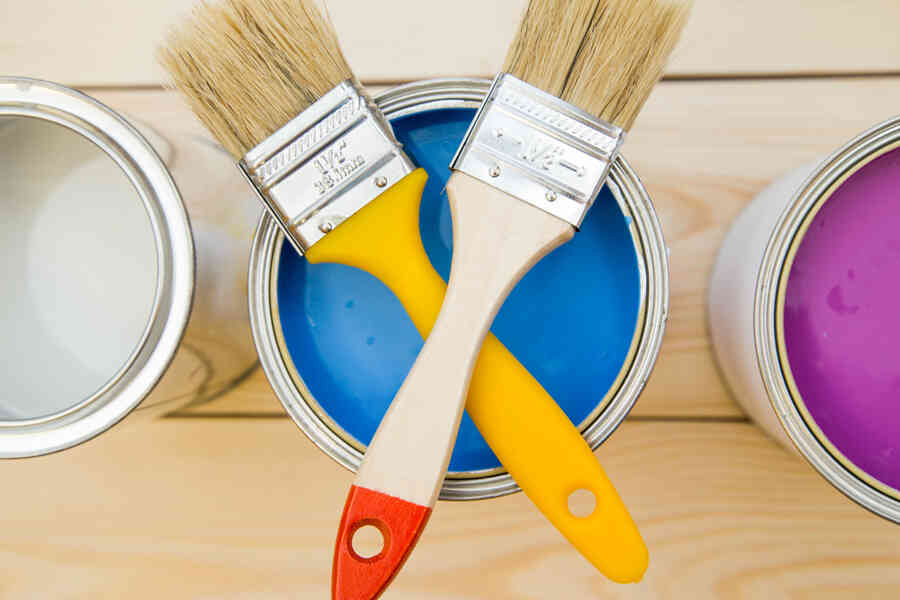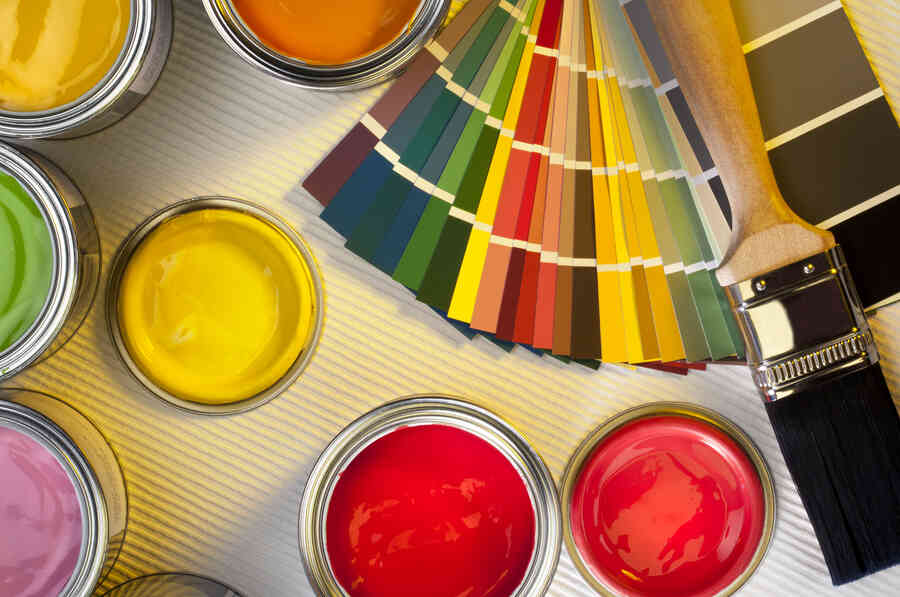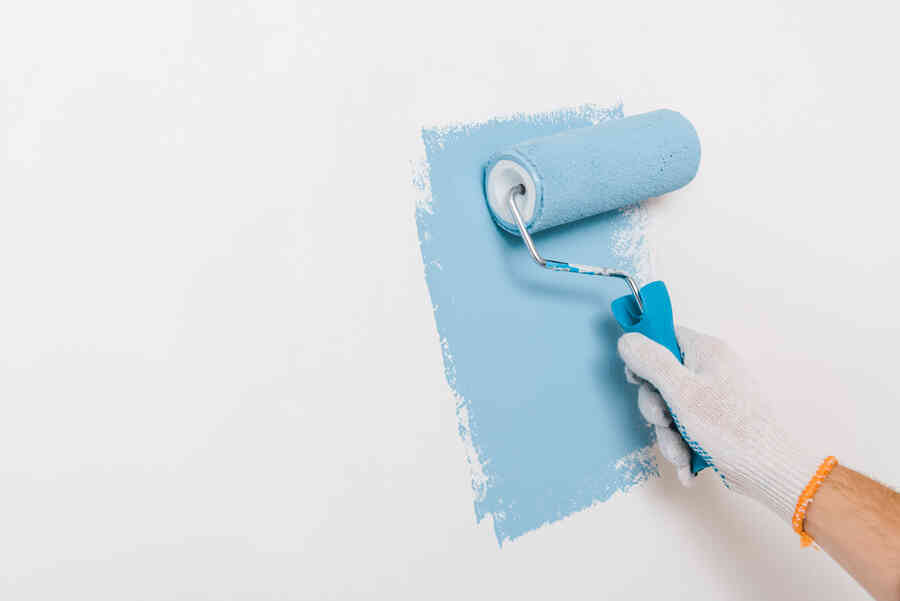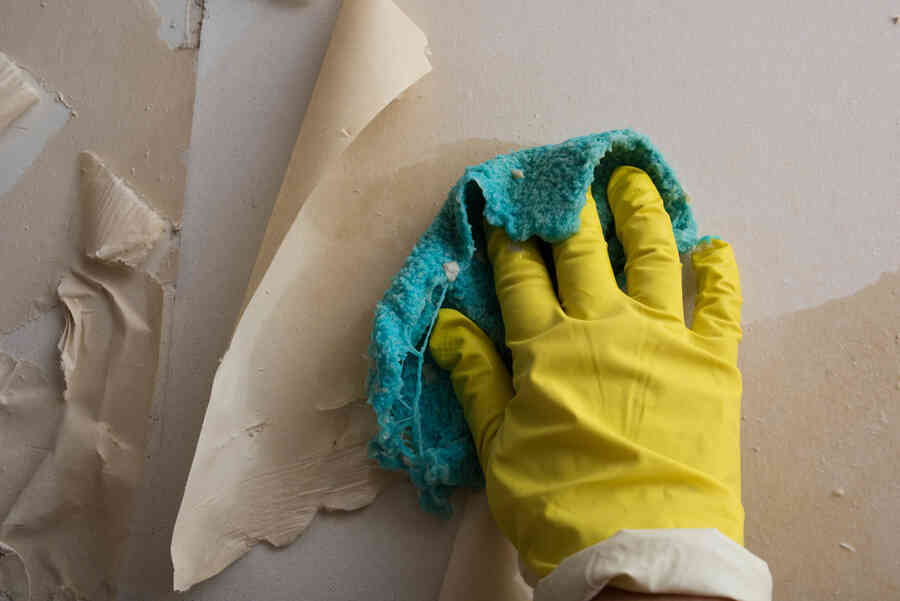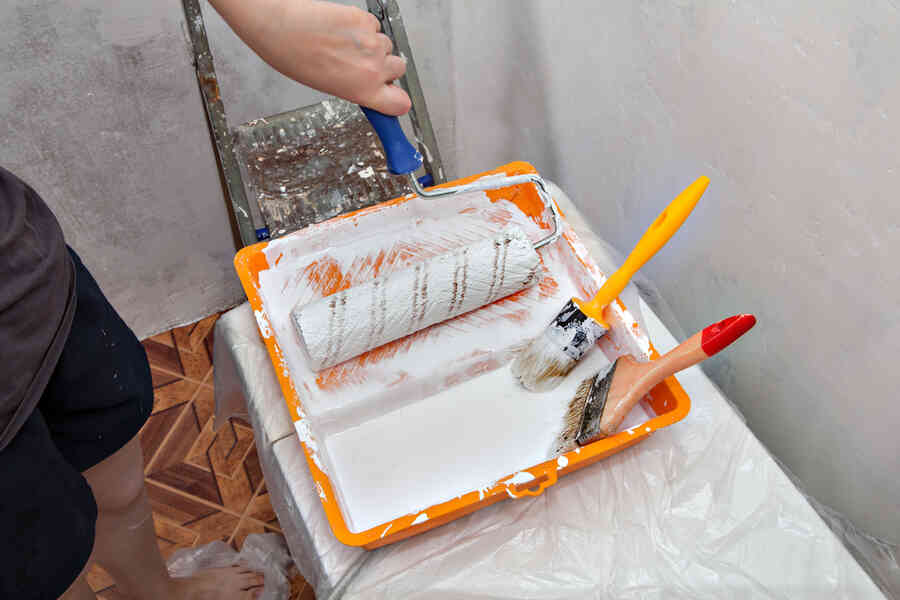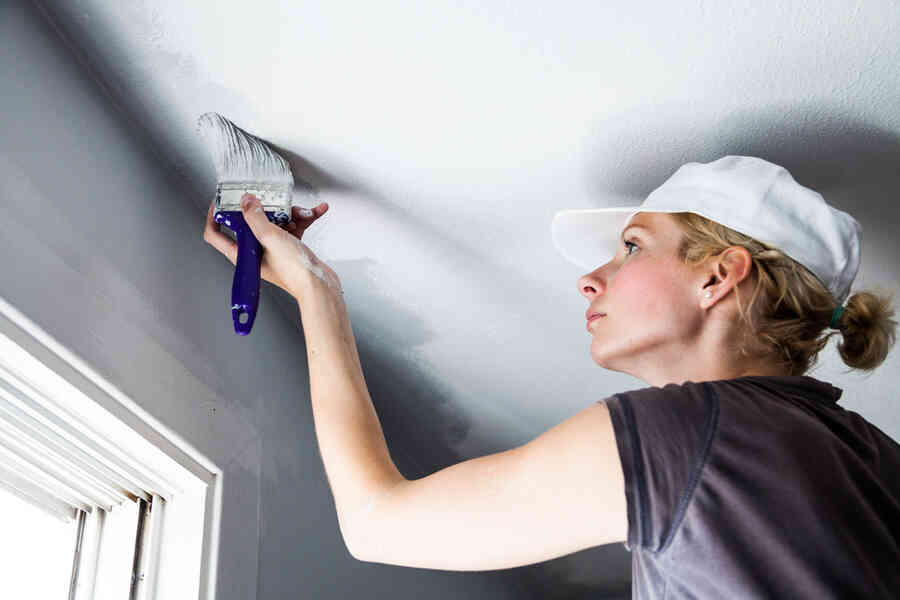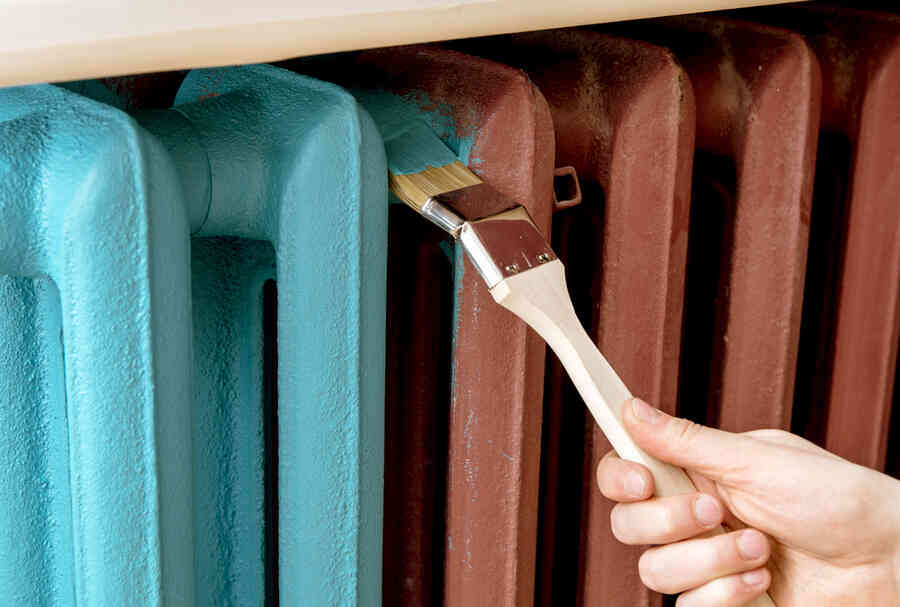If you are considering painting the interior or exterior of your home, you may have come across the term “emulsion paint”. But what is emulsion paint, exactly?
Emulsion paint, also known as latex or acrylic paint, is a water-based paint that consists of polymers, pigments, and additives. It is the most widely used type of paint for both DIY and professional painting projects due to its versatility and ease of use.
In this article, we will provide a comprehensive guide to emulsion paint. We will delve into the different types of emulsion paint, the advantages of using it, how to choose the right type for your needs, and provide step-by-step instructions on how to paint effectively with emulsion paint. Additionally, we will provide some tips and tricks to help you get the best results when using emulsion paint.
Finally, we will explore the environmental impact of emulsion paint and offer some suggestions for how to choose more sustainable paint options.
By the end of this article, you will have a solid understanding of emulsion paint and how to use it to achieve the best results for your painting project. So, let’s jump into the world of emulsion paint and discover what makes it a popular choice among homeowners and professionals alike.
The Different Types of Emulsion Paint
Water-Based Emulsion Paint
Water-based emulsion paint is the most commonly used type of emulsion paint. It is made with a water-based binder such as vinyl, acrylic, or PVA, which gives it an excellent finish and durability. Water-based emulsion is suitable for most interior and exterior surfaces and is environmentally friendly because it has a low VOC content.
Advantages of Water-Based Emulsion Paint:
- Dries quickly
- Low odour
- Easy to clean up with water
- Doesn’t yellow over time
Solvent-Based Emulsion Paint
Solvent-based emulsion paint is made with a binder that uses a solvent such as white spirit instead of water. It has better flow and levelling than water-based emulsion, making it a great choice for interior walls and ceilings where a highly durable finish is required. However, solvent-based paints have a higher VOC content and dry more slowly than water-based paints.
Advantages of Solvent-Based Emulsion Paint:
- Durable finish
- Smooth finish with no brush or roller marks
- Can be applied in thicker coats
Acrylic Emulsion Paint
Acrylic emulsion paint is a water-based paint that uses an acrylic binder. Acrylic paints are the most versatile type of emulsion paint as they can be used on almost any surface both interior and exterior, including wood, metal, plaster, and masonry. They dry more quickly than other emulsion paints and are available in a wide range of finishes from matt to high gloss.
Advantages of Acrylic Emulsion Paint:
- Quick drying time
- Low odour
- Good resistance to fading, cracking, and peeling
How to Choose the Right Emulsion Paint for Your Needs
The Surface You’re Painting
One of the first things to consider when choosing emulsion paint is the surface you’re painting. Different surfaces will require different types of emulsion paint. For example, if you’re painting a ceiling or a wall that has a lot of imperfections, you’ll want to choose a paint with a high opacity that can cover those imperfections. On the other hand, if you’re painting a smooth surface like glass or metal, you’ll need a paint that can adhere to those materials.
In addition to the material of the surface, consider the room in which you’ll be painting. If you’re painting a high-traffic area that’s prone to spills and stains, you’ll want a paint that’s easy to clean, such as a washable emulsion or one formulated with a stain-resistant technology. Alternatively, if you’re painting a bedroom where you want a calm and peaceful atmosphere, you may want to consider a paint formulated to absorb sound to reduce the noise level in the room.
The Finish You Want
The finish of your paint can have a considerable effect on the overall look of your space. Emulsion paint comes in different finishes, such as matte, eggshell, silk, and gloss. Each finish has its own pros and cons and works best in different settings.
- Matte: Matte paint has a flat, non-reflective finish that can hide imperfections and looks great in a traditional or rustic decor. However, it’s not as durable or washable as other finishes and stains can be more challenging to remove.
- Eggshell: Eggshell is a low-luster finish that has a slight sheen and is reflective, imparting a soft glow to your walls. It’s a popular choice for walls in high-traffic or moisture-prone areas as it is more durable and easier to clean than matte.
- Silk: Silk is a more reflective finish, which gives walls a subtle shine, but not as shiny as gloss. It’s perfect for hallways, living rooms or any space that doesn’t get too much direct sunlight. It’s also durable, stain-resistant, and can be easily wiped clean.
- Gloss: Gloss is highly reflective and adds a sleek, contemporary look to any surfaces, but it also highlights imperfections. It’s ideal for woodwork, doors, and trim, as it’s very durable and easy to clean.
Your Budget
Emulsion paint comes in different price ranges, so consider your budget before making your choice. Generally, water-based emulsion paint is less expensive than solvent-based or acrylic emulsion paint.
However, purchasing cheaper paint may mean sacrificing product quality, which can result in a less durable finish, poorer color retention, and the need for repainting more frequently. Investing in a higher quality, more expensive paint can provide long-lasting and better quality results in the long run.
The Process of Painting with Emulsion Paint
Preparation
Preparation is key to achieving a good finish with emulsion paint. Start by removing any loose or flaking paint from the surface you wish to paint. Fill any cracks or holes with a suitable filler and sand the surface smooth. Wipe the surface with a damp cloth to remove any dust or dirt.
If you’re painting a new surface or bare plaster, it’s important to seal the surface with a suitable primer before applying the emulsion paint. This will help the paint to adhere and ensure an even finish.
Application Techniques
Apply emulsion paint using a roller or brush. A roller is best suited for large areas, while a brush is more suitable for cutting in around edges and corners. Use a quality roller and brush to ensure the best finish.
Apply the paint in a ‘W’ motion, starting at one side of the wall and working your way across. Try to maintain a wet edge by working quickly and not letting the paint dry. Avoid overbrushing or overrolling as this can leave marks or streaks on the final finish.
For a smooth finish, it’s best to apply two coats of paint, allowing the first coat to dry completely before applying the second.
Drying and Curing Time
Emulsion paint typically dries to the touch within a few hours, but it’s important to allow it to fully cure before exposing it to any wear and tear. This can take anywhere from a few days to a week, depending on the type of emulsion paint used and the conditions in which it’s applied.
During the drying and curing time, it’s important to avoid touching or rubbing against the painted surface, as this can leave marks or damage the finish.
Tips and Tricks for Working with Emulsion Paint
How to Get an Even Finish
Getting an even finish when painting with emulsion can be a challenge, but there are a few tips that can help:
- Use a high-quality paintbrush or roller to avoid streaks or brush marks
- Apply the paint in thin coats, allowing each coat to dry thoroughly before applying the next
- Follow the manufacturer’s instructions for mixing and applying the paint
- Consider using a paint conditioner or flow improver to help the paint spread more evenly
- Avoid painting in direct sunlight or extreme temperatures, as this can cause the paint to dry too quickly and leave uneven patches
How to Avoid Common Mistakes
There are a few common mistakes that can occur when working with emulsion paint, but they can be easily avoided:
- Not preparing the surface properly before painting – make sure the surface is clean, dry, and free from any loose or flaking paint
- Not using the right type of paint for the surface – choose a paint that is specifically designed for the material you’re painting (e.g. wood, metal, plaster, etc.)
- Overloading the brush or roller with too much paint – this can lead to drips and uneven patches
- Not allowing enough time for the paint to dry between coats – this can cause the paint to peel or flake
- Using a low-quality paintbrush or roller – this can result in streaks or brush marks
How to Extend the Life of Your Paint
If you want to extend the life of your emulsion paint and keep your walls looking fresh and clean, there are a few things you can do:
- Clean your walls regularly using a mild detergent and water solution – this will remove any dirt, dust, or grime that can build up over time and cause the paint to deteriorate
- Avoid using harsh cleaners or abrasive sponges, as this can damage the paint
- Tackle any issues with damp or mould as soon as they arise, as this can cause the paint to bubble, peel, or discolour
- Consider using a clear topcoat to protect the paint from wear and tear, especially in high-traffic areas like hallways or staircases
- Store any leftover paint in an airtight container and keep it in a cool dry place – this will keep the paint fresh and prevent it from drying out or becoming unusable
Emulsion Paint and Sustainability
Environmental Impact of Emulsion Paint
Emulsion paint is a commonly used home decoration item. However, its production and use also have a negative impact on the environment. One of the principal causes of this negative impact is the release of volatile organic compounds (VOCs) into the air.
VOCs are chemicals that get released as the emulsion paint dries. They contribute to air pollution, which is harmful to human health and causes environmental damage. In addition, the solvents in emulsion paint can release hazardous chemicals into the soil and water when improperly disposed of.
Water-based emulsion paints have lower levels of VOCs than solvent-based paints. They are also easier to clean up, reducing the amount of hazardous waste generated. Therefore, it is essential to choose eco-friendly paint options that have a lower impact on the environment.
How to Choose Sustainable Paint Options
Choosing sustainable paint options can help reduce the negative environmental impact of emulsion paint. Here are some things to look for when selecting eco-friendly paint:
- Water-based paint has lower levels of VOCs than solvent-based paint.
- Choose products labeled low-VOC or zero-VOC.
- Look for products made from natural ingredients like milk protein, clay, or citrus oil.
- Choose products that are certified as eco-friendly or environmentally friendly by recognized organizations like the Green Seal or the Forest Stewardship Council.
The Future of Emulsion Paint
Manufacturers of emulsion paint are actively working to reduce the environmental impact of their products. They are developing new paint formulas that have lower VOC levels and are made from natural ingredients. Also, companies have started using recycled materials in their packaging to reduce waste.
Several manufacturers are creating eco-friendly paint options that use advanced technologies to reduce VOC levels even further. For example, some paint manufacturers are experimenting with air-purifying paint that can remove harmful pollutants from the air.
As more consumers become aware of the negative impact of traditional paint products on the environment, demand for sustainable paint options will continue to grow. This push towards more sustainable manufacturing practices and products will undoubtedly lead to new and innovative solutions to reduce the environmental impact of emulsion paint.
Conclusion
Emulsion paint is a popular choice for a wide range of interior and exterior decorating projects. It is a water-based paint that offers numerous advantages over other types of paint, including easy application, quick drying time, and easy clean up.
By understanding the different types of emulsion paint and how to choose the right one for your needs, as well as how to properly prepare surfaces before painting and apply the paint correctly, you can achieve professional-looking results and extend the life of your paintjob.
It’s important to also consider the environmental impact of emulsion paint, and opt for more sustainable options whenever possible. As more and more consumers become conscious of the impact their choices have on the environment, it’s likely that we’ll see an increase in sustainable paint options in the future.
In conclusion, whether you’re a seasoned professional or a DIY enthusiast, emulsion paint is a versatile and easy-to-use option that can help you achieve a wide range of decorating goals. By understanding the different types of emulsion paint and following best practices when it comes to application and sustainability, you can ensure that your paint job looks great and has minimal impact on the environment.
